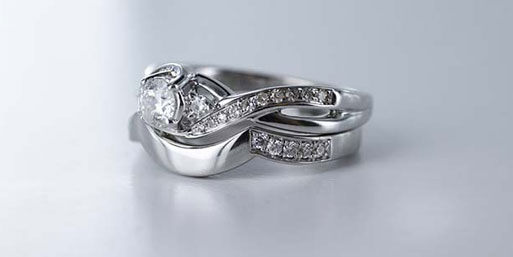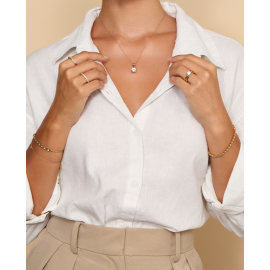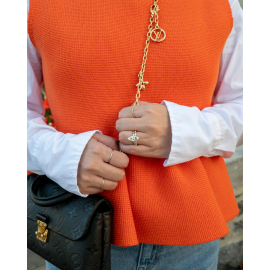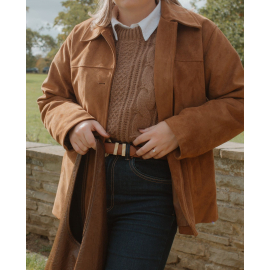Price match guarantee

We’ve teamed up with Klarna to provide flexible payment options, allowing you to shop the way you want. With Klarna, you can split your payment into 3 instalments or choose to pay later, making your shopping experience smoother and more convenient. Your order total must be between £100 and £499 to qualify.

We’ve teamed up with Klarna to provide flexible payment options, allowing you to shop the way you want. With Klarna, you can split your payment into 3 instalments or choose to pay later, making your shopping experience smoother and more convenient. Your order total must be between £100 and £499 to qualify.

May 10, 2016 | by Admin
It is law within the UK that every item of precious metal sold such as Platinum, Gold, Silver is stamped labelling the item with the type of metal it is. Platinum pieces which weigh less than 0.5 grams, 18ct Gold and Palladium pieces weighing less than 1.0 gram and Silver pieces weighing less than 7.78 grams are except from hallmark.
At Diamonds Factory all our products are hallmarked as per UK hallmarking law from London Assay Office (The GoldSmith Company)
The Goldsmiths' Company Assay Office is the oldest assay office in the United Kingdom. It has provided hallmarking services since The Goldsmiths' Company was founded in the 1300s. The company received its royal charter in 1327 and ranks 5th in order of precedence of the 12 Great Livery Companies of the City of London.
Hallmarking dates back to the 1300s when Edward I of England passed a law requiring any item made of silver, which was offered for sale, to be at least of equal quality as that of the coin of the realm (silver currency). The wardens of The Goldsmiths' Company were tasked with visiting workshops in the City of London to assay (test) silver articles. If these articles were found to be below standard they were originally destroyed and the metal forfeited to the King. If they passed, each article received the King's mark of authentication - the mark of a leopard's head. By 1478, there were several hundred workshops and merchants manufacturing silver articles in the City of London. It was not possible for the wardens to visit them all so the merchants were ordered to bring their items to Goldsmiths' Hall for testing and marking and a permanent Assay Office was established in the building. This is the origin of the term hallmark - struck with the King's mark at Goldsmiths' Hall.
In 1544 the Goldsmith's Company adopted the King's mark as their town mark and the mark of the leopard's head is now internationally recognised as the mark of this assay office.
The Goldsmiths's Company Assay Office is still based at Goldsmiths's Hall and remains the oldest company in Britain to be continually trading from the same site. However, it also has two satellite offices; at Greville Street in Hatton Garden in the heart of the London jewellery quarter and within a high security complex near London's Heathrow airport. It now has a new off-site facility within the Dalston-based jewellery manufacturer, Allied Gold. This is the first time in the Assay Office's 700 year history that it has opened permanent hallmarking services on a customer's premises.
In addition to hallmarking, the office has now expanded its range of services to support the jewellery trade and enforcement authorities. It offers a variety of specialist analytical services including nickel, lead & cadmium testing, antique silver dating, non-destructive compositional analysis, plating thickness measurement and a melt and assay service for scrap precious metal carried out in their fully independent on-site laboratory. Other services offered are a jewellery valuation service, laser marking, trading standards assistance, high quality photography and a comprehensive range of training and educational seminars, lectures and specialist events.






We were at the National Wedding Show last year, and met many of you who were looking to plan ahead for their special day. It was really interesting to speak to many people about what sorts of wedding rings they were looking for. Most of you were split 50/50 between wanting plain wedding bands and those who wanted diamonds in their wedding ring. In the spirit of giving people a great chance to get involved, we ran a competition which offered up to £1500 in crafting their own wedding ring with our manufacturing service.
Our lucky winner Kirsty Bennett had won up to £1500 to spend on her wedding rings. Using our bespoke service, we sat down with Kirsty to talk about what kinds of things she wanted in her new wedding ring. Her engagement ring featured a beautiful vine-inspired design which featured a single diamond in the middle which was studded with smaller diamonds all around the ring.
As a uniquely shaped engagement ring, this seemed like a perfect fit (pun intended) to go for a bespoke design. The task at hand was to make sure that her wedding ring fitted nice and flush in the grooves of her engagement ring. Because of the twist in her design, a standard wedding ring would create two gaps along the ring. It can be incredibly tricky with unique engagement rings to find a wedding ring that fits, but that’s where we come in.
We sat down in our London showroom to discuss what sort of things she was looking for. Kirsty expressed in the beginning that she was absolutely sure she wanted diamonds in her wedding ring (we love that by the way) but wanted to know more about how she would fit that into the design. In most cases, diamonds in wedding bands are quite small and serve to accentuate the original wedding ring. There’s also the added aspect of wearing the wedding ring for a long time, which means smaller diamonds do naturally suit kind of activity.
In order to get that flush fit, we came up with the following design :
Although it might seem like a weird shape on its own, it can fit perfectly within the grooves of the original engagement ring. Although a lot of wedding bands have a “wishbone” shape that allows it to fit around most engagement rings, this case shows that if you have a unique engagement ring, you’ll need a unique wedding ring to match.
In this design, the diamonds on the side serve as a subtle embellishment that compliments the original engagement ring; after all it is the set piece. Once this sketch was decided, we passed it onto our CAD team who were able to create a mockup of what the ring might look like in 3D :
By looking at the sketch and the CAD design, we tried to give a rough impression of what the finished ring might look like. Once they were approved, it would take 3-4 weeks to craft the finished thing below.
Luckily for Kirsty, her wedding ring was not too far away, nothing quite like winning something you’re looking to purchase anyway!
If you liked this article, and want to learn more about how you can design your own jewellery piece, head to our bespoke service page to find out more on how you can get started.